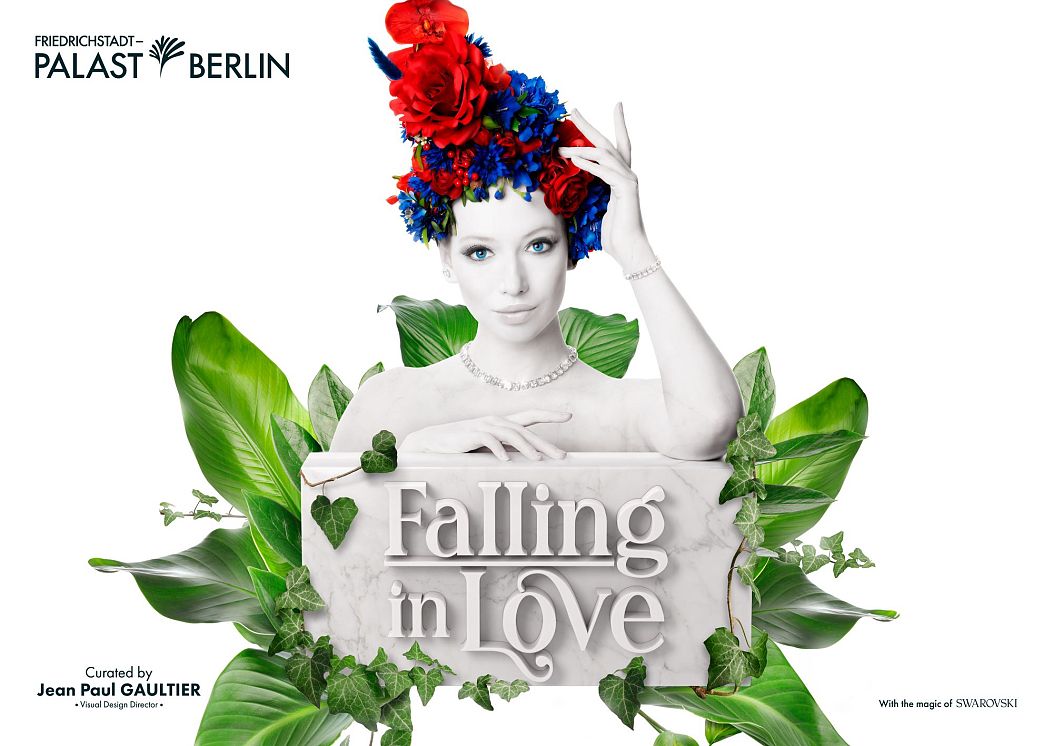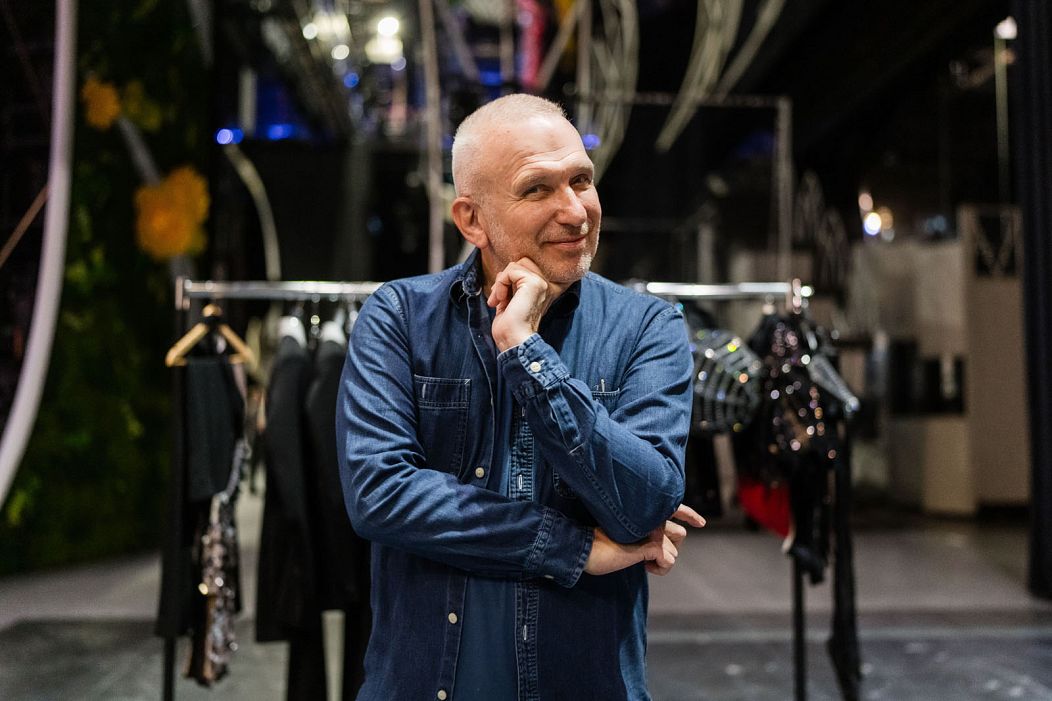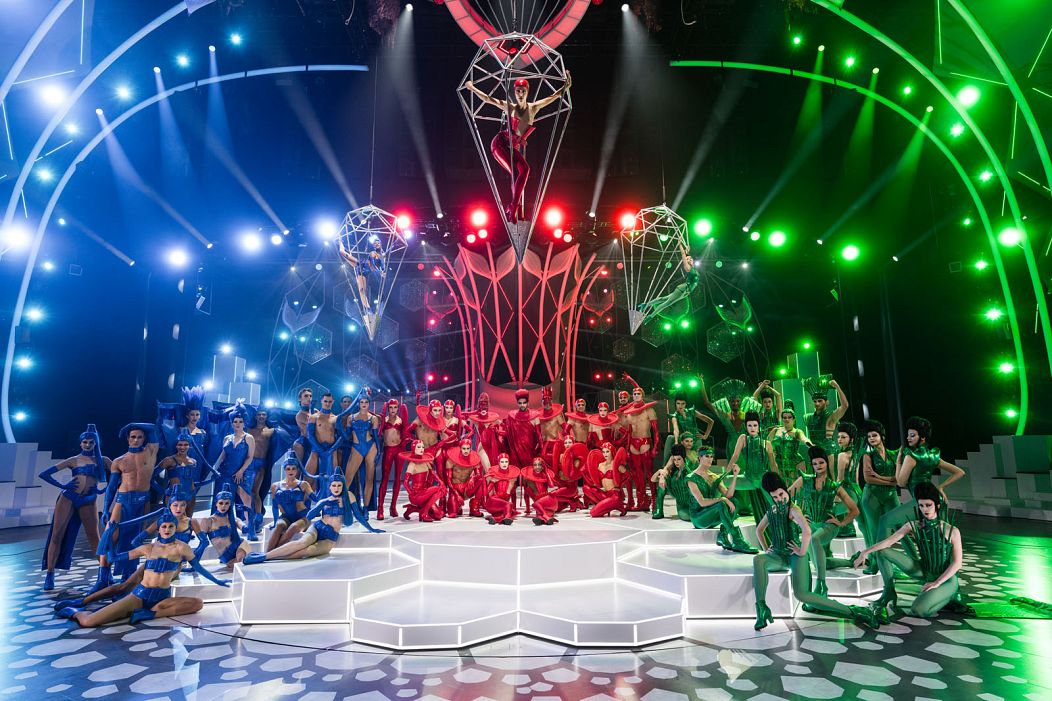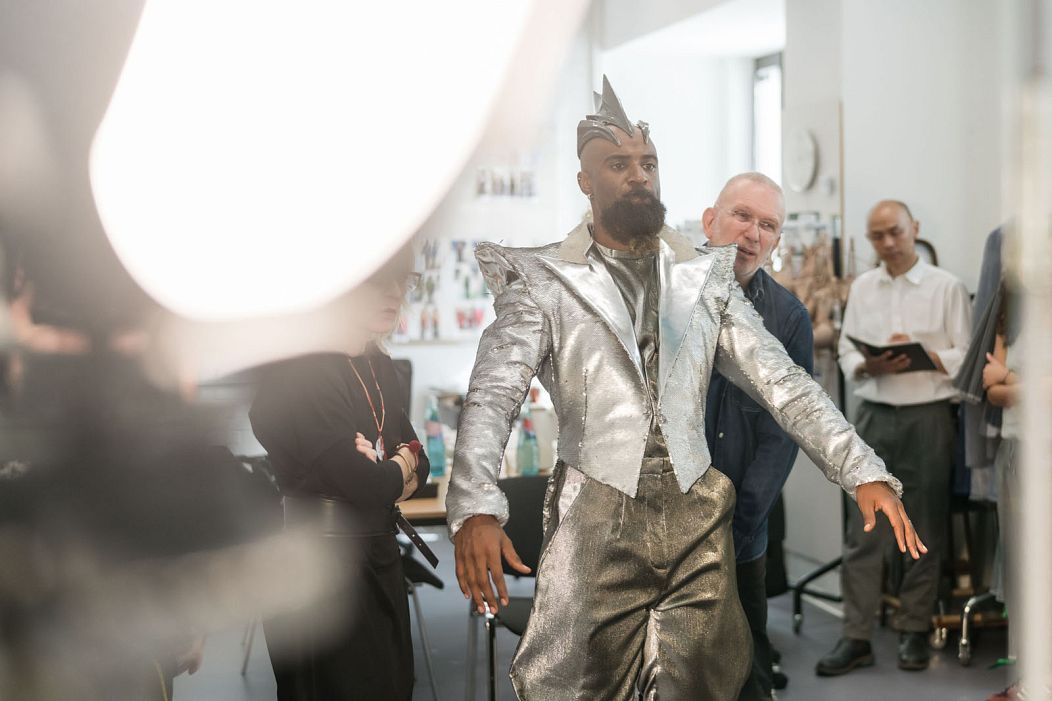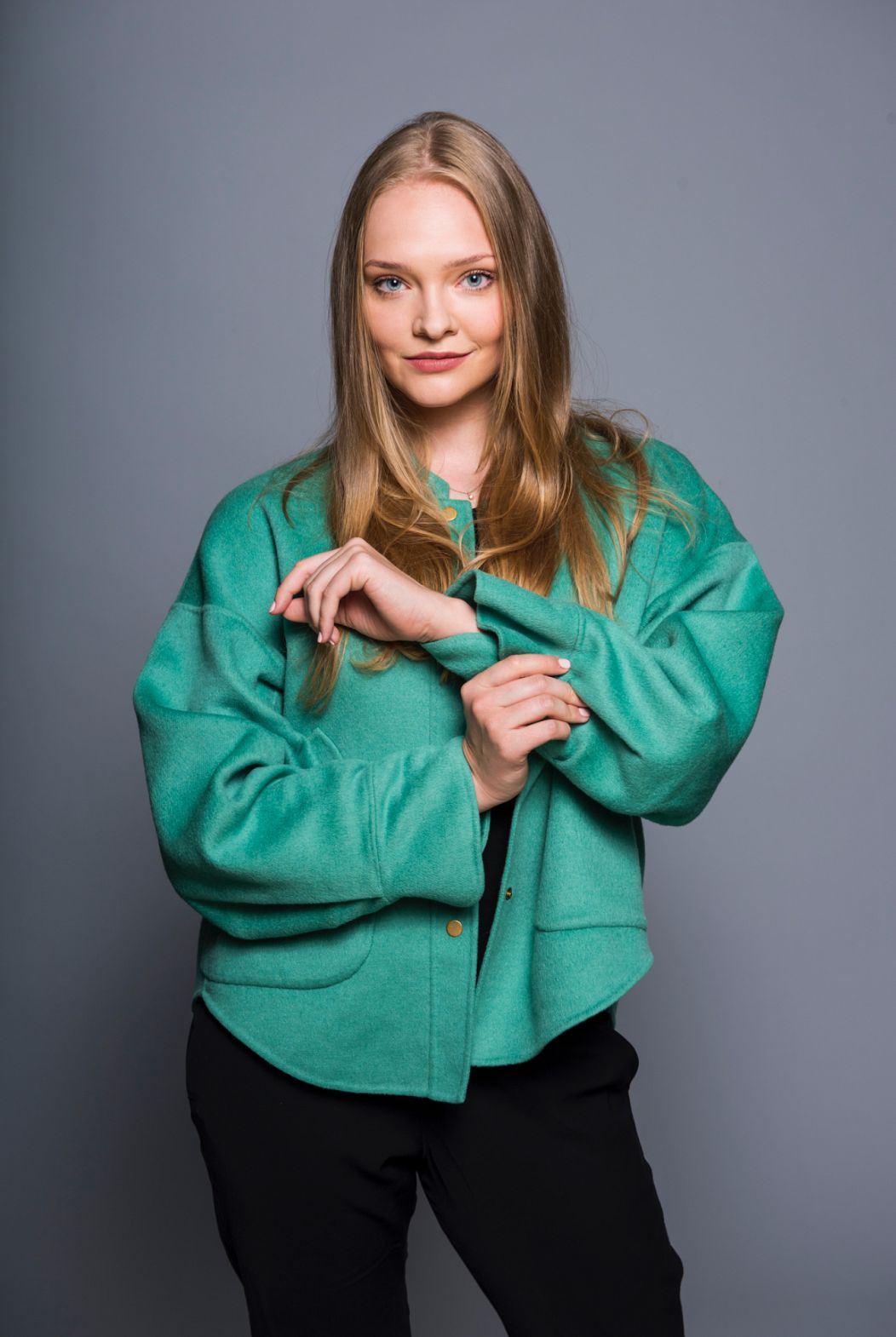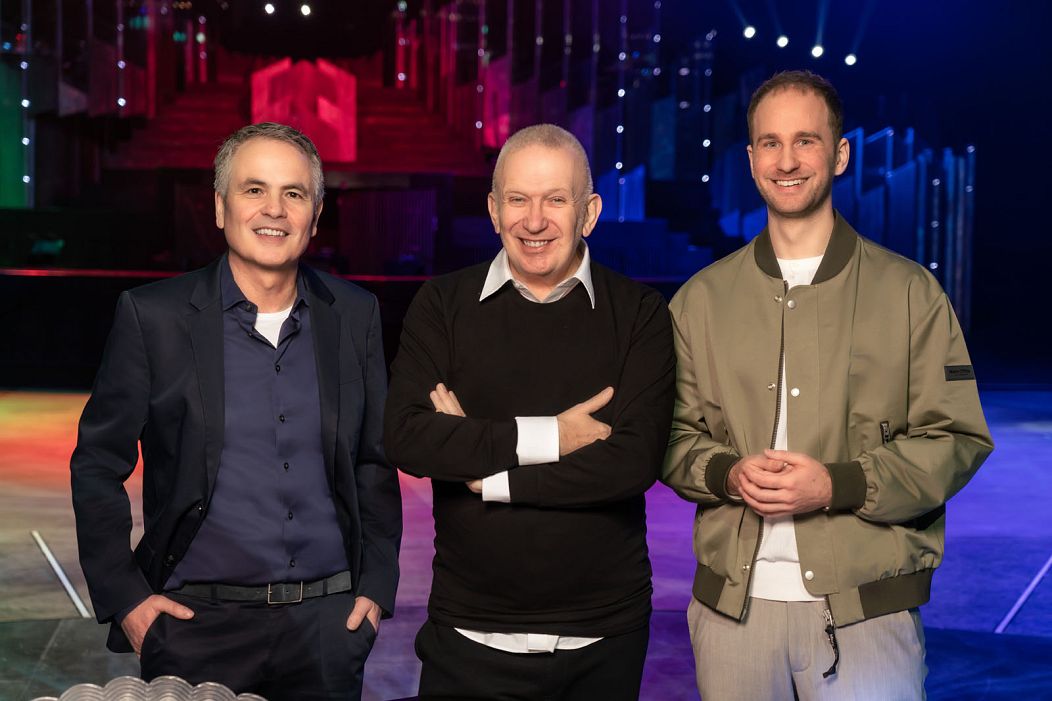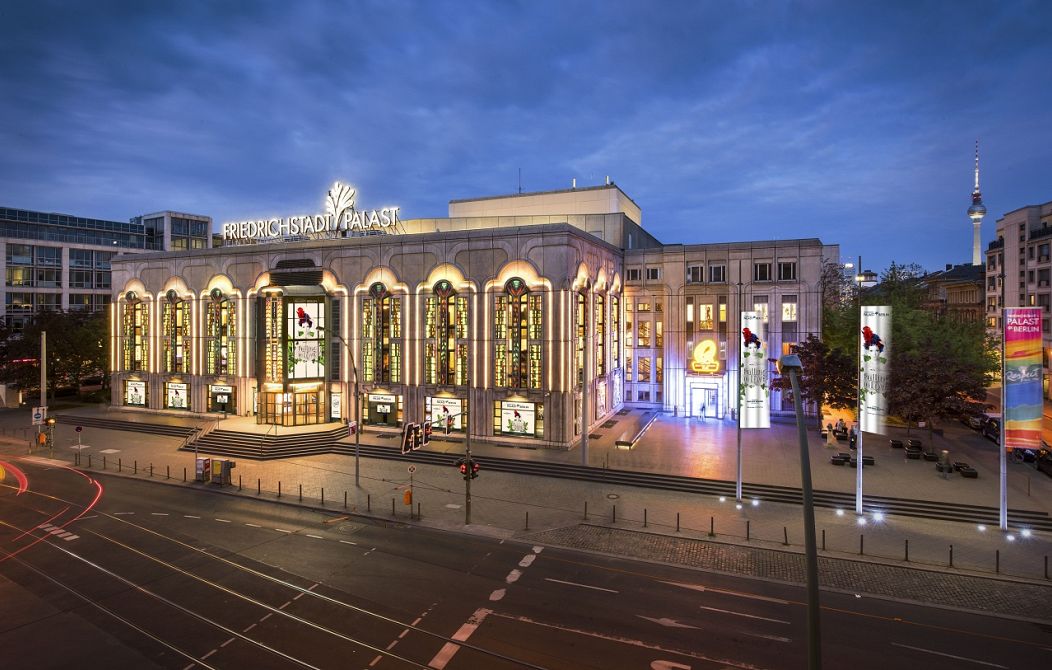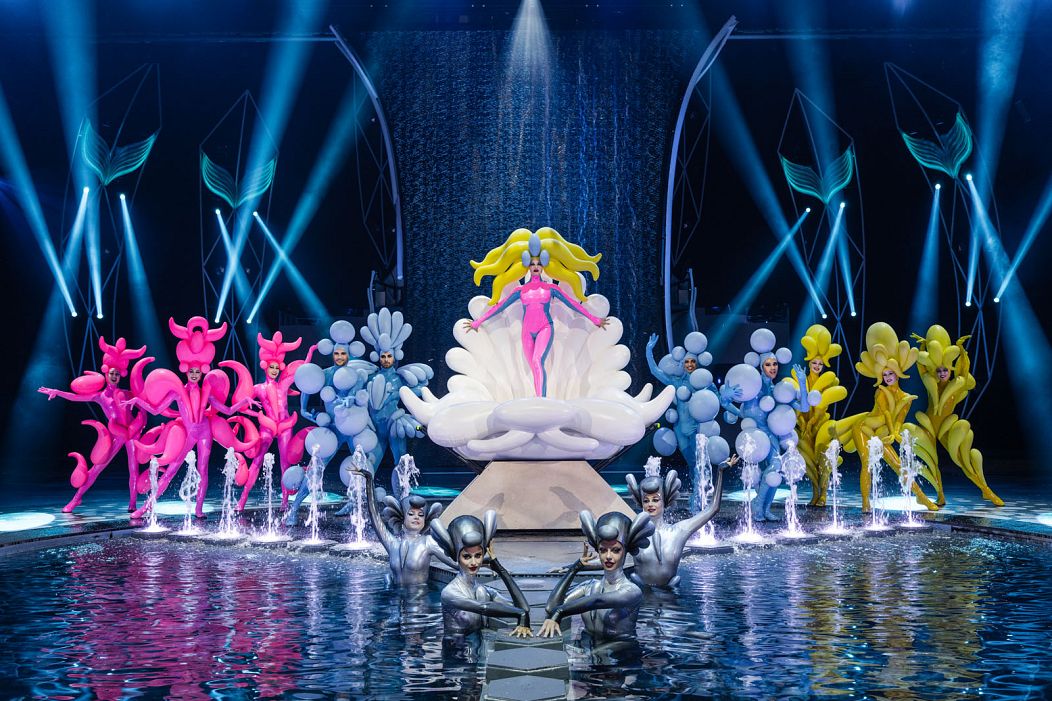“I went to the Garden of Love, And saw what I never had seen.” Thus begins William Blake’s 230 year-old poem ‘The Garden of Love’. And what a bloom has it inspired in the shape of musical sensation Falling in Love, at the Friedrichstadt-Palast in Berlin.
“I just remember how it was the first time I read the first two lines,” writer and director Oliver Hoppmann explains. “I went to the Garden of Love and saw what I never had seen. And that was just, wow, that struck me, because there’s pretty much everything in there for a show. There’s a reference to nature, to love, I mean, what else do you need?”
Well, it turns out what else you need are a supporting team of 60 performers, 50 musicians and countless backstage and office staff. Oh, and an audience, which now collectively amounts to half a million spectators. Some of whom, much to my initial dismay, clapped along rather a lot.
Deafness and isolation
The show centres on a young, creative but rather lost character called ‘You’, a deaf poet whose inability to conform leaves them dejected until an immersion into the lost Garden of Love opens a realm of possibilities. A magical place where they may finally find words, and a voice that is heard.
That it is a spectacle is doubtless. From the get-go, Falling in Love showers you with light, with colour and with a wow factor that doesn’t ever really go away. Your eyes dart left, right, up, through, beyond, and at every shift there is a new colour, a new depth, another stonking guitar-riff. And while you’re blown away by the sheer magnitude of this visual carnival, the remaining part of your senses will not be surprised to discover that the entire thing has been curated by the French fashion stylist Jean Paul Gaultier.
“Jean Paul and I, we’ve known each other for quite some time…he has become a friend of our house because he loves the shows at Frederickstraße Palast,” continues Hoppmann. “He travels here privately to see shows. So we have been in regular contact. And when we came to that idea of that new show, that poem, that garden of love, we said, okay, who could be that person who brings that spark in a couture way to that?”
There is of course only one answer. Enter Jean Paul Gaultier.
“I have had the pleasure and the privilege to design again many costumes for Falling in Love, but I also worked with other designers: Matières Fécales and Sasha Frolova. The challenge was to choose great collaborators who would share my and Oliver’s vision for the show. And after our initial meetings and exchange of ideas and first sketches I was happy to give them almost a carte blanche for their sections of the show,” Gaultier explains to Euronews Culture.
The layered production design and the scale of that design gives you a tangible 360 degree sensation. The costumes are truly spectacular with echoes of Gaultier’s iconic outfits in The Fifth Element but also The Hunger Games which, although designed by Judianna Makovsky, betrayed a Gaultier influence in places.
“I have some codes that are part of my style and my fashion vocabulary,” he says. “The corset and the cone bra is one of them. I always want to create something new but at the same time I use my fashion codes as my vocabulary.”
They will rock you
Theatrically it shares some elements with the We Will Rock You musical that ran for 12 years in London, and not just the wall of guitars. The flagrant pantomime nature that pervades much of the interaction is a common by-product of writing it large. And this is as large as indoor theatre gets. From the kick-off number Diamond City, it’s clear the show is going to be a kaleidoscope.
And you need such a thing when the whole audience is not bilingual and therefore the jokes sometimes fall flat. The audiences have comprised many nationalities but the top five are France, Switzerland, the US, Austria, and Denmark.
There is cheeky titillation (the lower cheeks to be precise) and super-hench pecs on show in a celebration of athletic prowess and beauty.
Choreography and technical elements come together to form something genuinely beautiful; a dancer abseiling down a waterfall enchants the mind while a wonderfully-engineered fountain dance is candy-popping fun. And all the camp, kitsch, multicoloured vibrancy sometimes finds its way into the audience. There’s no fourth wall here. We’re allowed into the pop video, the dream, the trip. The guitar-toting character of Leon is part game show host, part Worf from Star Trek.
I wonder if all this colour has left characterisation as a second thought. The colours don’t really inhabit the character types they represent in any physical or vocal way which leaves us having to try to recall them. Gaultier himself admits his greatest challenge on this production “was the soloists and how best to express their nature and their feelings through the costumes.”
Good vibrations
There is something tribal about the colours here. We have three camps: red, green and blue, all in their various ways offering modes of expression to the poet to colour their world. The theme of deafness and isolation is encapsulated by the character of ‘You’, which brings a profound level of meaning to the carnival.
“I try to focus on vision, on touch, on vibrations,” says Justyna Woloch, who plays the deaf character of ‘You’. “There is, built into the stage, a vibration plate in the middle of the hexagon that was purposefully made for people with hearing problems to be able to feel when to really be on the music and not be off the beat.”
Woloch is not deaf but took over from deaf performer Hearns Sebuado when she took the role of ‘You’.
“The plate helps me as well because, of course, I hear music and I immediately start moving but I really consciously have to try to stop hearing it, which is really hard. And so many times during the show I’m touching the vibration plate and trying to really block out all the sound.”
To illustrate the genesis of this element of the show, Hoppmann tells me about a deaf poetry slam that he attended 10 years ago where he suddenly understood the frustration of those with hearing impairment.
“I’m a hearing director in a room of non-hearing people with performers on stage who are only using sign language, German sign language, to recite their poems. And I didn’t have a clue what they were saying. There were, like, verbalisations and an audio description.”
“There was a verbal translation for people who were hearing and couldn’t understand sign language,” he recounts. “But, you know, a director always wants to be ahead of time, right? You want to know what comes next, what happens next. And I couldn’t because I had always to wait until I got the translation. I really felt it. I’m the last person in the room that understood.”
It is without a doubt impressive that the themes of deafness and isolation are part of something so vast, loud (in both colour and sound) and inclusive, and the Palast itself plays a fundamental part in the proceedings. With an unrivalled stage area of 2,854 square metres, and near-perfect sight lines for the whole audience, as well as a trailblazing air-conditioning system via the actual seats, unusually visual treats can be clearly observed in comfort.
Also playing a role is the wider geographical context. The inimitable city of Berlin.
“I love Berlin,” admits Gaultier. “I have been coming regularly for years. There was still the wall dividing the city the first time I visited. And this show is possible only in Berlin with its unique history and unique feeling.”
Disco ball shoulder pads, bike helmets, glitter g-strings with regency wigs run amok on the enormous stage. Every number is a brilliant pop video leaving little room for sentiment but plenty of fuel for entertainment. Gaultier is resolute on what’s important.
“It is a show, a Grand Show and I think it is most important that the audience enjoys themselves, that they enjoy the story, the music, the dancing, the special effects, the costumes. Whether that enjoyment is through form or the substance is not crucial for me,” he says.
Another thing that will not have escaped the audiences are the extraordinary number of crystals in the design. This is thanks to a partnership deal with Swarovski who provided a staggering 100 million crystals in all cuts and colours, which I am assured is a new world record in live entertainment. I’m not convinced there was an old world record to beat but it certainly fits the ‘sky’s the limit’ remit.
Profundity may be hard to detect among a sea of crystals but there are important themes at work amongst the glitz.
There’s an anthropological callback to Levi Strauss in the play’s symbolic handing-over of the written word from the character of ‘Me’ and then to the character of ‘You’. Walls created by isolation are broken, which takes on its own emotional evocation after the confinement of the global pandemic.
The astonishing acrobatic performers (audiences genuinely screaming with disbelief at the physical feats) fall out of windows onto trampettes and ping back up again only to throw themselves out again is a nice metaphor for human romantic behaviour. The silly shapes we bend ourselves into for love and visibility.
And on the philosophical note, when quizzed about upcoming fashion trends, Gaultier responds with something that probably should be on a poster.
“I don’t look at fashion as much as I used to. And trends are just trends but the style is something that stays. If you are too fashionable then very quickly you become unfashionable. As the French say La Mode se démode.”
Falling in Love is booking until 5 July 2025.



